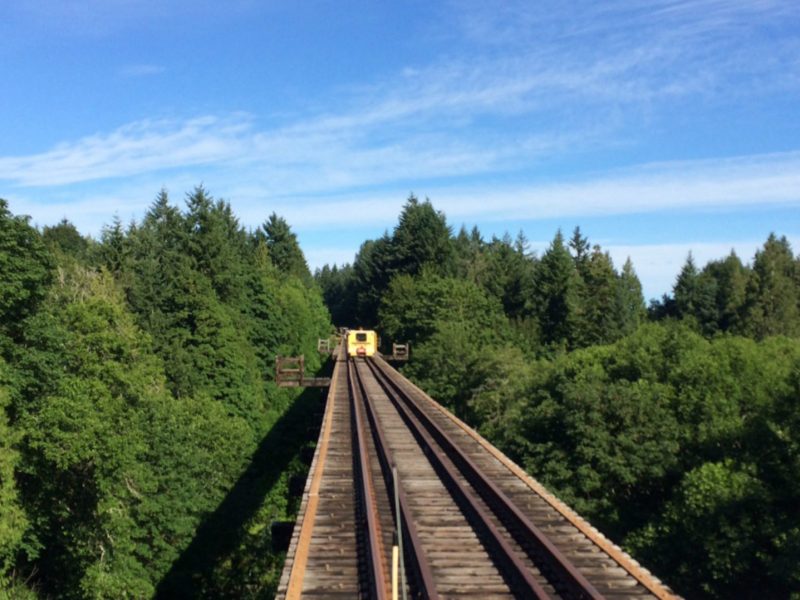A day before the March 15 deadline the BC Court of Appeal set for a decision on the future of the Vancouver Island Rail Corridor (previously the Esquimalt & Nanaimo Railway), the province announced $18 million towards planning and a recognition of First Nations interests in the corridor.
“Any potential future use of the corridor, whether it involves rail restoration or not, must involve First Nations participation and perspectives,” BC transportation minister Rob Fleming said in a statement. “By the early 2030s, Vancouver Island will exceed one million residents and with that growth we need to consider the future value of the corridor for the movement of people and goods.”
But for Dennis Comeau of Top Shelf Feeds Inc. in Duncan, the island’s only feed mill, restoration can’t come too soon.
Top Shelf has spent millions on additional shipping costs since 2014, when it became reliant on Seaspan to deliver raw inputs by barge following the end of freight service on the rail line.
“Since 2014, we’ve spent over $3.5 million extra,” Comeau told Country Life in BC last fall. “Those costs have never been passed onto the end-user.”
Comeau had high hopes during the Seapspan strike last fall that a decision to restore rail service would come this spring, and is disappointed at a further delay.
“[I’m] disappointed that there’s not a full-on ‘let’s get this going and we’ll access the money and get this railway built’ because it has absolutely hurt our business and obviously our producers on the island not having this rail intact,” he says.
Transportation costs continue to keep the price of feed high on Vancouver Island, Comeau said. While the price of some grains has come down since last fall, freight and fuel costs have not. Top Shelf can only absorb the costs so long before it has to pass those costs onto producers.
Comeau says Top Shelf supplies 40% to 60% of the farms on Vancouver Island, primarily smaller operations, and some may not be able to handle a sudden increase in feed costs.
“They’re just going to pull the plug. It’s not worth it for them,” he says. “A lot of customers rely heavily on us, and they could not get that supply from the mainland on a regular basis.”
With the island’s population growing, and the province focused on food security, Comeau thinks there’s no time like the present to build local transportation capacity that supports local communities.
“If we don’t start now, I think we’re going to see a definite negative outcome in the next two years for producers pulling off the island,” he says.


 Filling a market for fresh corn in Chase
Filling a market for fresh corn in Chase